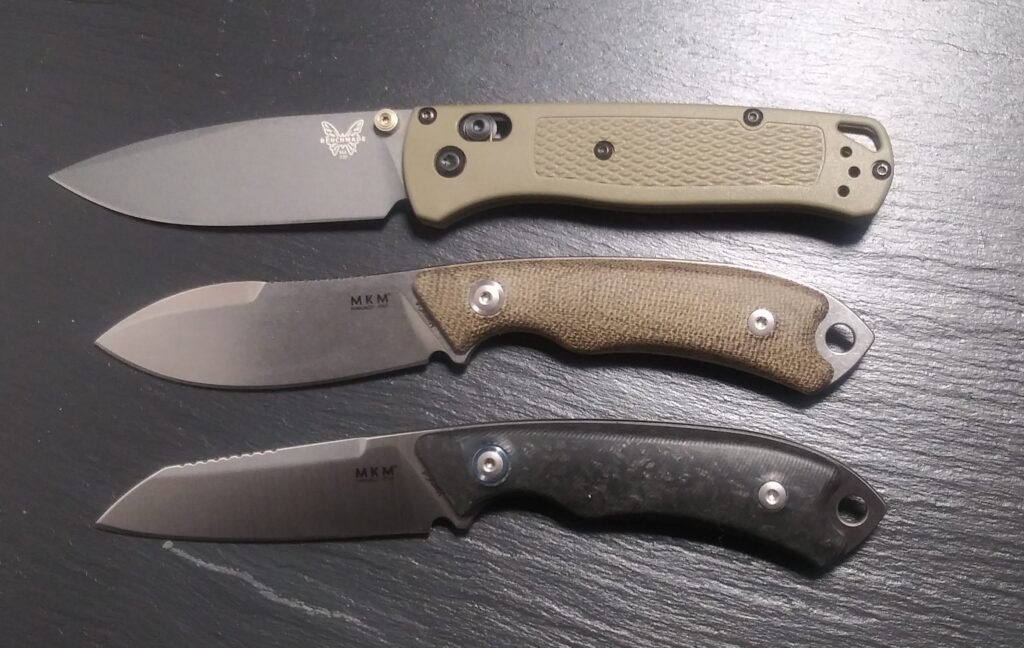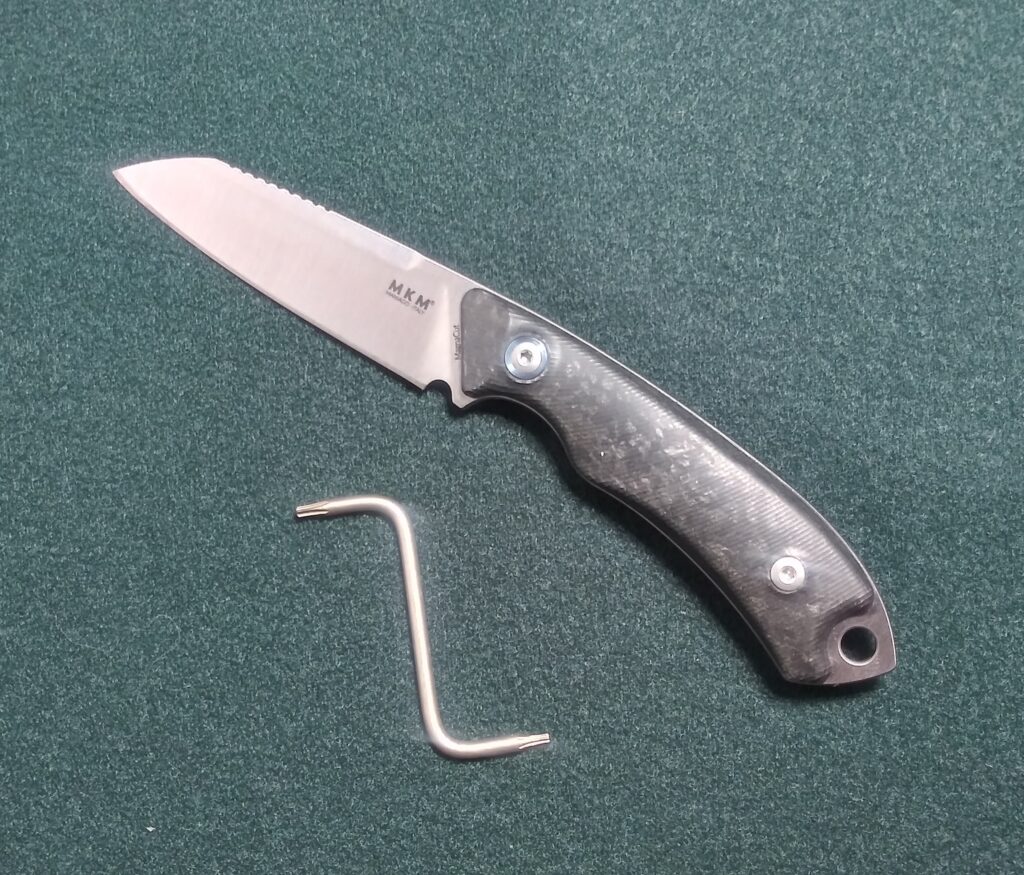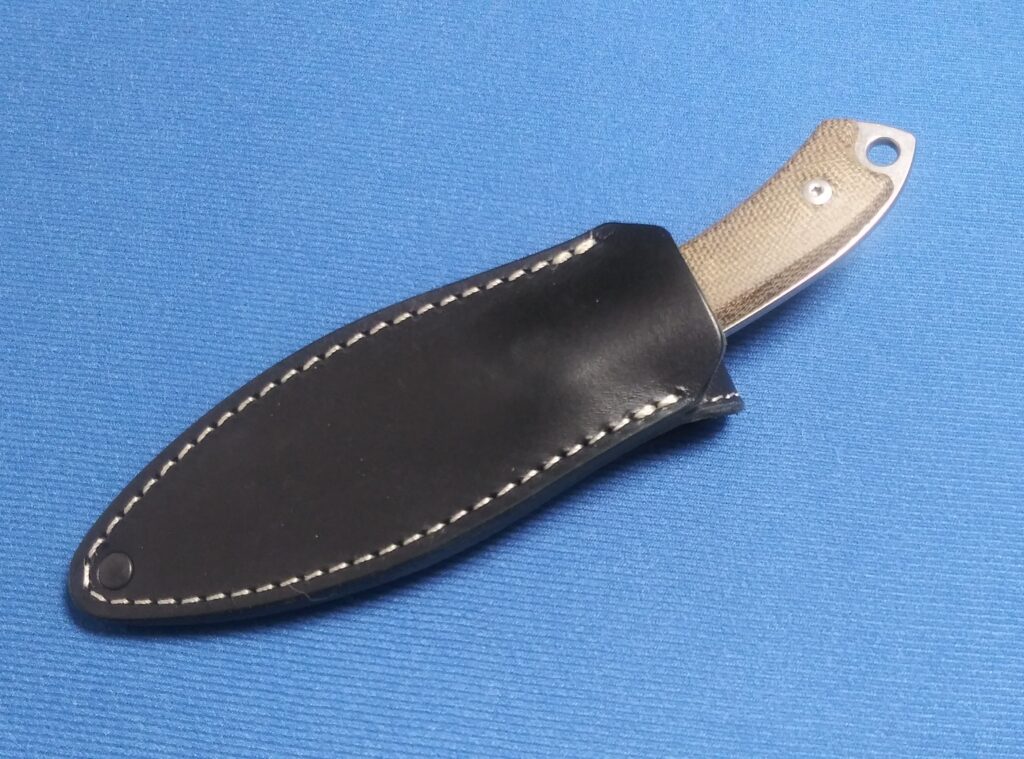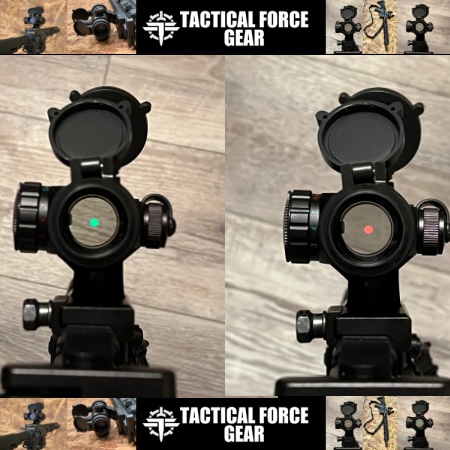David C. Andersen is a well-respected authority on knives. He’s been writing about them for ages and works for KnifeCenter. He has his own knife company called Nordsmith Knives and also designs knives with other companies. Like me, Andersen is a fan of the pocket fixed blade. The Pocket Tango duo is his first production knife collaboration release.
The MTM Pocket Tango: Dancing the Knife Away
As Andersen puts it, the knife was designed to be your everyday dance partner. The Pocket Tango comes in three iterations. Pocket Tango 1 has a Nessmuk-inspired blade profile. The Pocket Tango 2 has a lambsfoot blade. Some call it a reverse tanto. There is also a Pocket Tango 3 with a sheepsfoot blade that isn’t included in this review.
The knives are made from MagnaCut, the latest, greatest steel that’s been sweeping through the knife world. That sounds flippant, but it has absolutely earned a solid reputation for high quality, toughness, and edge retention.
The Pocket Tango 1 and 2 are identical in size. The knife is 6.69 inches long, with a 2.91-inch blade. They differ just slightly in weight, with the Pocket Tango 1 coming in at 2.54 ounces and the Pocket Tango 2 weighing 2.33 ounces. These may also differ slightly based on the handle material, as each model is available in several different iterations.

The Pocket Tangos are produced by LionSteel in Italy.
Amazing Ergonomics
I mentioned my love of pocket carry fixed blades. The downside is that I have large hands and dislike a three-finger grip on my blades. This leads to difficulty in finding that Goldilocks model that fits both my pocket and my hand equally well.
Andersen has pulled it off with this knife design. To be fair, it’s more of a 3.5 finger grip than all four, but there’s enough real estate on the handle to be comfortable for me to hold and use. There’s also enough meat with the palm swells, so the knife doesn’t feel lost in my hand.
The spine is nicely rounded. There’s a bit of jimping to provide added traction for detail work. A lanyard hole is located at the base of the handle.
Both models are available in several different handle configurations. They’ve also included a wrench so that the scales can be removed or replaced as desired.

Personally, I gravitated more toward the Pocket Tango 1 over the 2, but both are versatile and handy.
Well-Designed Sheaths
For many makers, if a sheath is included with the knife, it’s treated almost as an afterthought. It’s nothing special or fancy, just a simple way to protect the blade and keep it secure. Here, it’s obvious that a lot of thought went into the sheath design.

Rather than a pocket clip, the sheath is secured with a magnet. This allows you to easily remove the sheath as needed. The magnet also serves to help secure the knife in place, which is a nice bonus. When the knife is in the sheath, you have a total overall length of about 7.5 inches. This isn’t bad at all for pocket carry.

Retailing well below $200, the Pocket Tango is an excellent option for an EDC fixed blade. Andersen did an incredible job with the design, and MKM and LionSteel did equally well with the production end of things.
Read the full article here













